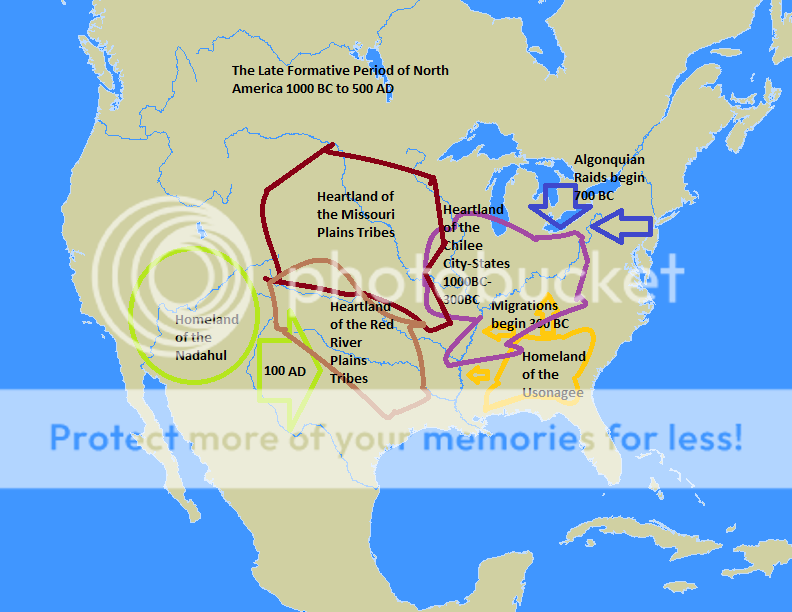Well North America's lack of major domesticable crops is worrisome. Corn and potatoes are not enough.
You are forgetting amaranth, manoomin (wild rice), sunroot, sunflower... It is a myth that North America lacked good crops (and potatoes are from the Andes, BTW.)
Anyways, I think you all are giving too much importance to large domestic mammals and not enough to other protein sources: The Aztecs, for example, ate salamanders, iguana, snails,
spirulina, dogs (which can also give wool and leather in addition to meat), turkey in addition to
ducks and cavies in South America. Furthermore, there are plenty of fish species that could be domesticated in Aridoamerica and further north such as
bluegill,
crappie, perch and
sucker fish (such as the
Cui-ui endemic to the Great Basin that the Paiute in the region around Pyramid lake subsisted on.), not to mention many marine fish and invertebrates, including the vast array of which supported the complex cheifdoms of the PNW coast. And fish skin can be
made into a leather superior to that of mammals, a process that can use urine or salt (the OTL Inuit knew of and widely used the former method.)
I think the key is to increase the amount of small animals and plants domesticated in North America; looking for a large mammal to domesticate is a red herring when there are so many far more productive small animals and plants to grow.
If civilization spread earlier or developed indigenously in more places, then we would see more cultural diffusion, more widespread writing, more standing armies and a larger population, all of which would make the Americas far more difficult to conquer than in OTL, where it took a couple centuries to assure dominance over the continent by Europeans anyways.
If the Mississipians developed writing and were thriving from trade and farming milkweed, manoomin, amaranth, sunroot, sunflower and crappie when the Spaniards came, they would probably not fall but rather adapt, innovate and survive to the present day. Just look at the practically ASB way the Inka fell; it was not their lack of development, it was that they were just shocked by the cruelty and wickedness of Pizarro and his gang. If Atawallpa had simply brought his 80,000 nearby troops to acompany him when he met Pizarro at Cajamarca, he most certainly would have at least gotten away, and probably captured most if not all of the Spaniards and carried out his plan for them. Or if the Sapa Inka was in Qusqu, where the Spaniards would have had to fight an even larger army on the way out. Either way, it is not hard to see Tawantinsuyu stay an independent power even with such a slight alternation of OTL.
Besides, if the buffalo were domesticated, what would buffalo riding warrior nomads do to the development of the Mississippians, the most complex society to develop north of Mesoamerica? Who would stand against the arms of the Europeans better, Buffalo riding nomadic raiders or a vast, coordinated and orderly state?

